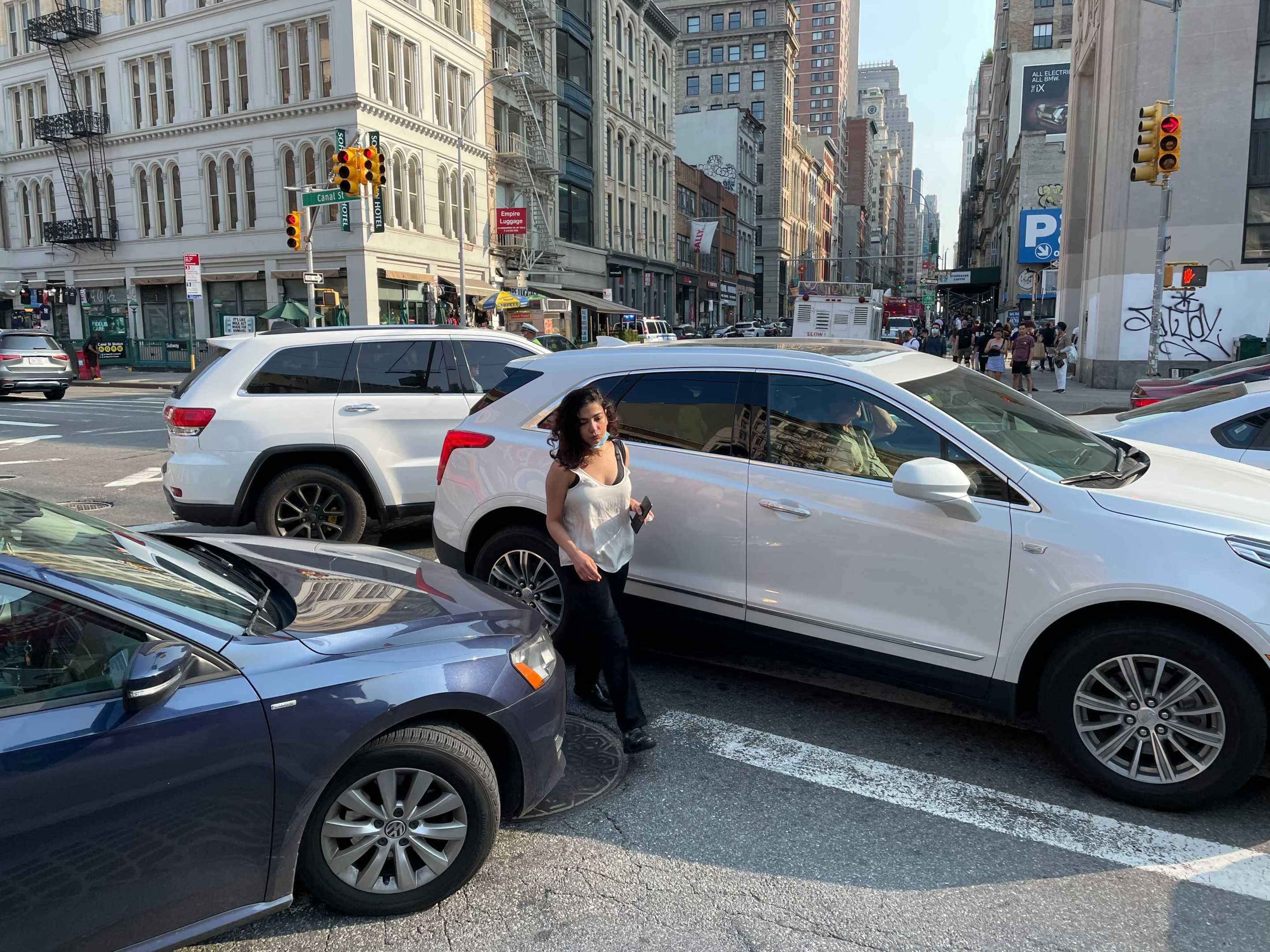Is it finally time to #FixCanal?
More than four years after that activist-fanned hashtag (and petition) first ignited the internet with hopes of making Canal Street a safer roadway, the Department of Transportation has finally agreed to sit down and discuss the problem on Monday night.
Please join us on 3/7 at 6PM for a workshop to discuss pedestrian, #BikeNYC, & vehicle improvements along Canal St from the West Side Highway to the Manhattan Bridge. The presentation will be available in English & Chinese.
— NYC DOT (@NYC_DOT) March 1, 2022
Please register in advance at https://t.co/0v8KpBxNLQ pic.twitter.com/t8HKPHfOSh
The agency promised a "presentation" during the 6 p.m. Zoom call, and said its "workshop goals" were to "discuss street safety needs," "gather local knowledge," "brainstorm corridor improvement ideas" and "establish expected project timeline."
News of the coming workshop — the traditional start of DOT's long process of redesigning roads — was cheered by activists.
“Today’s announcement is an important step forward to creating a Canal Street that reclaims space from cars and puts people first," said Juan Restrepo, Transportation Alternatives Senior Organizer. "For years, we’ve called for safety investments that prioritize the safety of people on sidewalks, bikes, and transit. Instead of seven highway-sized lanes of car traffic, people on Canal Street deserve wider sidewalks, protected bike and bus lanes, and car-free public space.”
The timing of the workshops was not lost on Wellington Chen, executive director of the Chinatown Partnership, citing last year's change in restoration of two-way tolling on the Verrazzano-Narrows Bridge. ""It's the right time," said Chen. "The two-way tolling is like letting the air out on one side."
Chen added that his group would approach the workshop with recommendation that are "nothing new": he wants better lighting and much wider sidewalks.
"We give so much priority to cars that there is not enough space for pedestrians," he said. "The level of service for pedestrians is level F. That's not good enough."
The stakes couldn't be higher. Canal Street is one of the city's true car sewers, spewing a torrent of vehicles between the Manhattan Bridge and the Holland Tunnel and West Street. In just the four years since that first #FixCanal tweet in February, 2018, there have been more than 1,833 reported crashes on just the stretch of Canal between the Manhattan Bridge and West Street, injuring 58 cyclists, 68 pedestrians and 262 motorists, killing two pedestrians.
Since the beginning of the de Blasio administration in January 2014, there have been 4,817 reported crashes on the same stretch, injuring 109 cyclists, 190 pedestrians and 520 motorists, killing one cyclist, five pedestrians and one motorist. Again, that's an average of 1.6 crashes per day on just one mile of city roadway.
Chinatown area residents and leaders have followed the Transportation Alternatives petition effort with several years of activism.
In early 2020, for example, a Community Board 1 committee voted unanimously to tell DOT that it was tired of studies for the roadway and wanted safety improvements immediately. The board was persuaded by statistics such as this:

“I hope this doesn’t become a set of decades-long studies,” longtime resident Joseph Tedeschi said at the time, even citing a then-nine-year-old Streetsblog story that itself referenced a 2002 study on the terrible conditions on Canal.
Indeed, there's nothing new about the problems of Canal Street as a conduit of congestion, carbon and carnage. In 2011, Streetsblog reported that the New York Metropolitan Transportation Council, the federal planning zone for our region, had finally put out a report recommending, among other things, vastly expanded pedestrian space, thanks to wider sidewalks, an HOV lane on the Manhattan Bridge and the Bowery, and car-free zones on Pell, Doyers, Mosco, and Mulberry streets. A separate memo on parking policy argued for making the most of scarce curb access and reducing parking-induced driving. That document recommended a further crackdown on parking placards (sound familiar?).
According to the NYMTC report, the city DOT and other agencies had agreed to use the recommendations to inform a final plans, though such a plan never materialized.
That NYMTC report was the fruit of the so-called "Canal Area Transportation Study," a process that itself began in 2002.
Twenty years later and, perhaps, it's time to actually start fixing Canal. In fact, it's long overdue:
Lets talk about inconveniencing the many to please the few on Canal: 57 pedestrians crossed this street in the time it took 5 cars to get through(most of which ran the red light), yet more than 80% of the space on Canal street is devoted to cars.#fixcanal pic.twitter.com/2JTzUKzkBw
— Joe - 🇺🇦 I stand with Ukraine 🇺🇦 (@urbaneoptics) September 11, 2019
UPDATE: DOT did not initially respond, but on Wednesday, agency spokesman Vin Barone said: “We are excited to talk with New Yorkers about how to make Canal Street safer and more accessible. This is a ‘blank-slate’ workshop where we highlight issues we've observed; share traffic and crash data; and listen to the community's concerns and goals for the street.”
To register for the workshop, click here.






